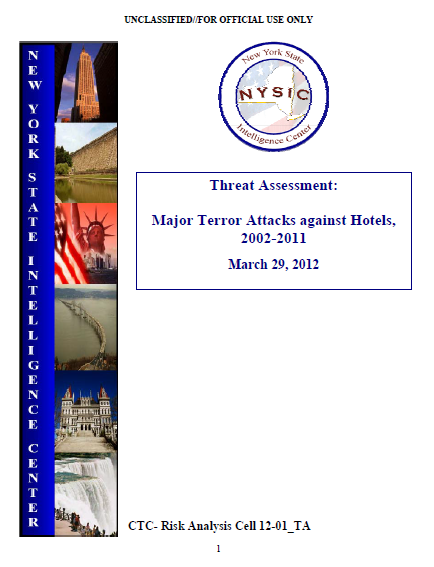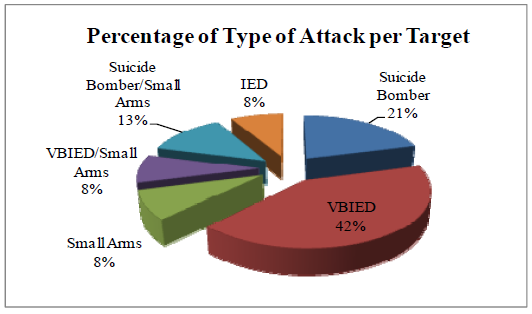New York State Intelligence Center Threat Assessment: Major Terror Attacks against Hotels, 2002-2011
- 12 pages
- For Official Use Only
- March 29, 2012
This product analyzes major terror attacks on hotels and provides a strategic-level assessment of the groups, tactics, and frequency of global terror attacks against hotels from 2002 – 2011. Additionally, the product identifies the deadliest types of attacks, comparing casualty counts and attack methods. The product was derived from media reporting and unclassified, for official use only sources.
Key Assumptions
Radical Islamic groups, including al-Qaeda and al-Qaeda linked groups continue to plan attacks against the West, including the United States (US). These groups view civilians as potential targets and will continue to use a variety of attack methods. Lack of information pertaining to a certain category in this report does not necessarily represent the absence of a threat. However, the frequency and tactic of attack analyzed in this report may indicate the most common vulnerabilities to an attack on the hotel sector.
Executive Summary
Since 2002 there have been 18 major terrorist attacks against hotels worldwide; a major attack is defined as an attack resulting in at least 10 casualties. During this time period there were no attacks against US homeland-based hotels. Groups with a connection to al-Qaeda carried out all but one of these major attacks.
- An attack on a hotel within New York State or the US would most likely follow the current predominant worldwide trend and utilize explosives or small arms.
- Major attacks against hotels were primarily carried out using a military grade explosive; however, an explosive device constructed within the US would most likely use homemade explosives, such as triacetone triperoxide (TATP).
- The use of small arms to attack a US-based hotel may be seen as a more viable option than trying to assemble a homemade explosive. Al Qaeda and their affiliates have encouraged Western-based radicals to use small arms to carry out attacks because of their ease of use and availability in comparison to building an explosive device.
- The likelihood of an al-Qaeda-inspired lone actor successfully attacking a hotel is low. However, lone actors in the US have shown an interest in targeting hotels previously. For example, Farooque Ahmed, arrested in April 2010, conducted pre-operational surveillance at a Washington, D.C. area hotel.
- A key leader or high-profile event/mass casualty opportunity was targeted in nearly 50% of the attacks, and represents a possible motivating factor for targeting.
- The most common tactic used against hotels is a vehicle-borne improvised explosive device (VBIED), accounting for 43% of the attacks analyzed in this report.
…


